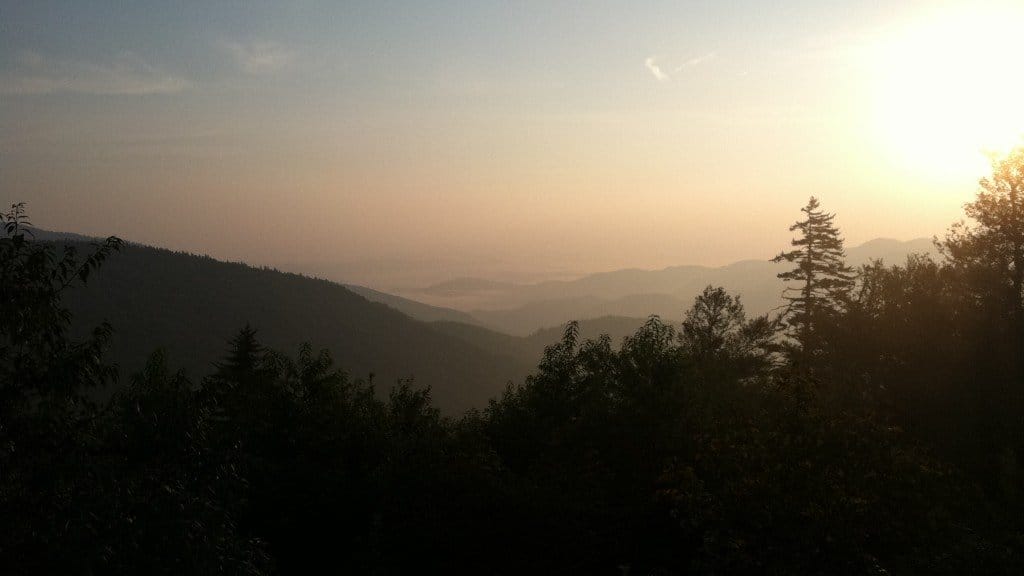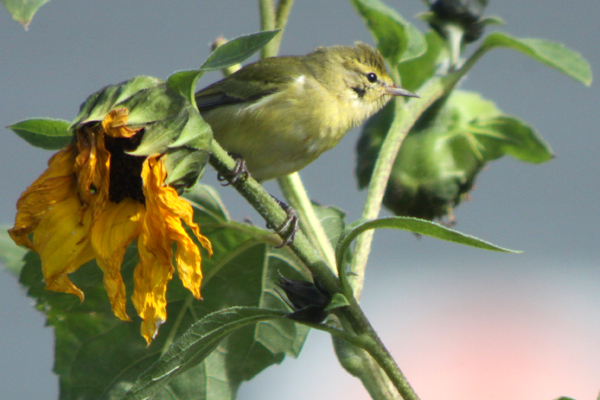The verdant Appalachian Mountains, North America’s concerned forehead, stretch from the northern parts of Georgia all the way to the fir covered forests of New England. Unbeknownst to most of the millions of Americans that live within a few hours drive of their misty peaks and secluded hollows, the ancient, topographically diverse Appalachians are one of the biodiversity hotspots of the planet, comparable with the tropics in the western hemisphere. Granted, much of this diversity manifests itself in salamanders (10% of the global diversity) freshwater mussels (10% of global diversity) and vascular plants, which are not the flashy taxons to which the general public seems to gravitate, but the point that this is a very special place with surprises around every gap and bald.
This past weekend, while I was vacation over the long holiday with my family in Asheville, North Carolina, a little town in the part of the Appalachians named the Black Mountains, I was made aware of an amazing phenomenon that mountain birders had known about for years. It’s well-known that the Appalachian Mountains are a crucial visual migration cue for thousands upon thousands of birds that migrate up and down the eastern half of the continent every year. Hawks are the classic example, largely because they migrate primarily by day and use the updrafts and thermals created by the mountains to launch their migration south in massive numbers, but songbirds too, even though they migrate primarily at night and presumably would be less dependent on the ridges as roadmaps. But they still use the mountains to orient themselves, though not in the same way. And to see this happen, you have to get out on the Blue Ridge Parkway, that ribbon of asphalt administered by the National Park Service. You have to go to a Gap, a low pass between two mountains, preferably before sunrise. You get out, and wait.
First, you’re treated to one of those amazing mountain sunrises that everyone needs to see at least once in their lives.

You hear them first. In the dark pre-dawn. Ticks and seets and whistles. Then, as the sun burns off the mist you see them. In ones and twos and fours. Tiny birds, warblers mostly, poring through the gaps from east to west by the dozens.
We all know that songbirds migrate at night to avoid predators and take advantage of the calmer atmospheric conditions, but it’s still very easy for a bird that weighs little more than a third of an ounce to get blown off course. So when the sun rises and the birds are able to get a visual accounting of their position, they compensate by heading the the nearest gap in the ridge, heading perpendicular to their original bearing, and getting back on track.
For the birder, it means a near steady stream of birds crossing over your head from east to west. Many fly too high to be identified, even at binocular range, but many perch in nearby trees, hopping, skipping and jumping in the general direction of west. I never walked more than twenty feet in any direction and I found Black-throated Green Warblers, Black-throated Blue Warblers, tail-flashing American Redstarts, subdued Chestnut-sided Warblers, washed out but still classy Blackburnians. More Cape May Warblers than I’ve ever seen in my life. And the Tennessees. Oh, the Tennessees.
Tennessees get a unfair rap in my book. They just happen to be one of the more plain members of a gaudy bunch, but in fall, when all the other warblers are in their cool down plumage, Tennessees come alive. They appear drenched in near totality in a greenish-yellow that practically glows in the firs and birches of the high Appalachians. And when they come, they come in bunches. Masses of Tennessees, a full 80% of the birds I saw on the day were Tennessee Warblers. Dozens of them. Flocking, albeit pretty loosely.
And it’s not just warblers. Ruby-throated Hummingbirds buzz by. Vireos, Red-eyed, Yellow-throated, and especially Blue-headed, creep past the overlook. The odd Swainson’s Thrush passed through.
What’s best is that the birds are generally close enough to see well. The Blue Ridge Parkway has an abundance of scenic overlooks, which essentially put the treetop warblers at eye level. I had Black-throated Greens gallivanting in my face, and the aforementioned Tennessees taunting my camera-less self from the roadside bushes. Why didn’t I have my camera? Or, rather, why did not have the memory card, that most important and tiny part of the camera? That’s a story for another time, and a reason to return, as if I needed one.
Fortunately, the epic visual songbird migration of the Appalachians is not something you forget easily.














Leave a Comment